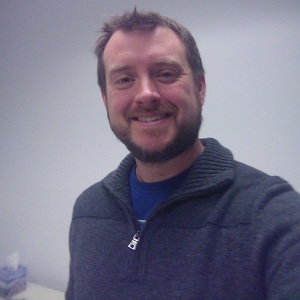InfoQ Homepage Interviews Learning Fast at Spotify
Learning Fast at Spotify
Bio
Simon Marcus is Head of People Operations at Spotify. Previously, he was Chief Operating Officer of The Library Corporation, where he lead an extraordinary whole-company lean/agile practice. Simon speaks frequently at both local and international Lean Kanban conferences, most recently keynoting at Agile Isreal 2014. Simon tweets at @lycaonmarcus.
About the conference
Software is Changing the World. QCon empowers software development by facilitating the spread of knowledge and innovation in the developer community. A practitioner-driven conference, QCon is designed for technical team leads, architects, engineering directors, and project managers who influence innovation in their teams.
Jan 21, 2015
Interview with
This content is in the QCon Software Development Conference topic
Related Topics:
-
Development
Development
Followers: 3824
-
Architecture & Design
Architecture & Design
Followers: 9581
-
Culture & Methods
Culture & Methods
Followers: 3750
-
Kanban
Kanban
Followers: 72
-
Self-organizing Team
Self-organizing Team
Followers: 35
-
QCon San Francisco 2014
QCon San Francisco 2014
Followers: 0
-
Agile Techniques
Agile Techniques
Followers: 222
-
Scrum
Scrum
Followers: 366
-
Lean
Lean
Followers: 230
-
QCon Software Development Conference
QCon Software Development Conference
Followers: 243
-
Teamwork
Teamwork
Followers: 79
-
Agile
Agile
Followers: 1031
Sponsored Content
-
Related Editorial
Fostering High-performing Work Environments for Software Development
How to Improve Software Team Performance with Experimentation
How Team Health Checks Help Software Teams to Deliver
How to Scale Agile Software Development with Technology and Lean
Virtual Panel: Increasing Engineering Productivity, Develop Software Fast and in a Sustainable Way
-
Related Sponsored Content
-
Popular across InfoQ
-
TikTok's Native Cross-Platform UI Framework Lynx Goes Open Source
-
Rebuilding Prime Video UI with Rust and WebAssembly
-
Google Cloud Announces Kubernetes History Inspector to Visualise Cluster Logs
-
GitHub Copilot Can Now Run in Windows Terminal
-
.NET 10 Preview 2: Enhanced Reconnection UI, Improved Blazor Features, and Updates across the Stack
-
Simplify Your System by Challenging The Status-Quo and Learning from Other Ecosystems
-
